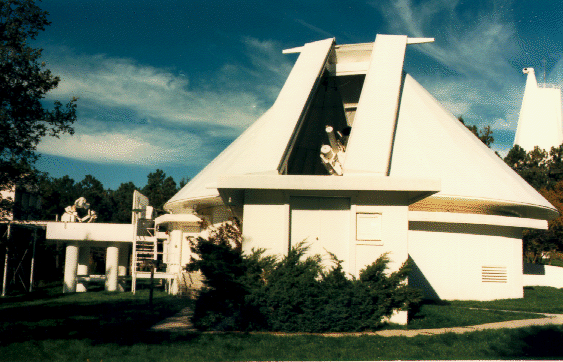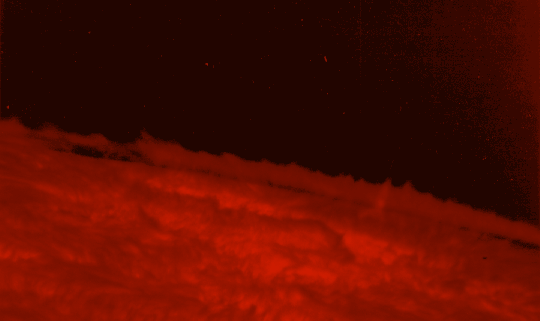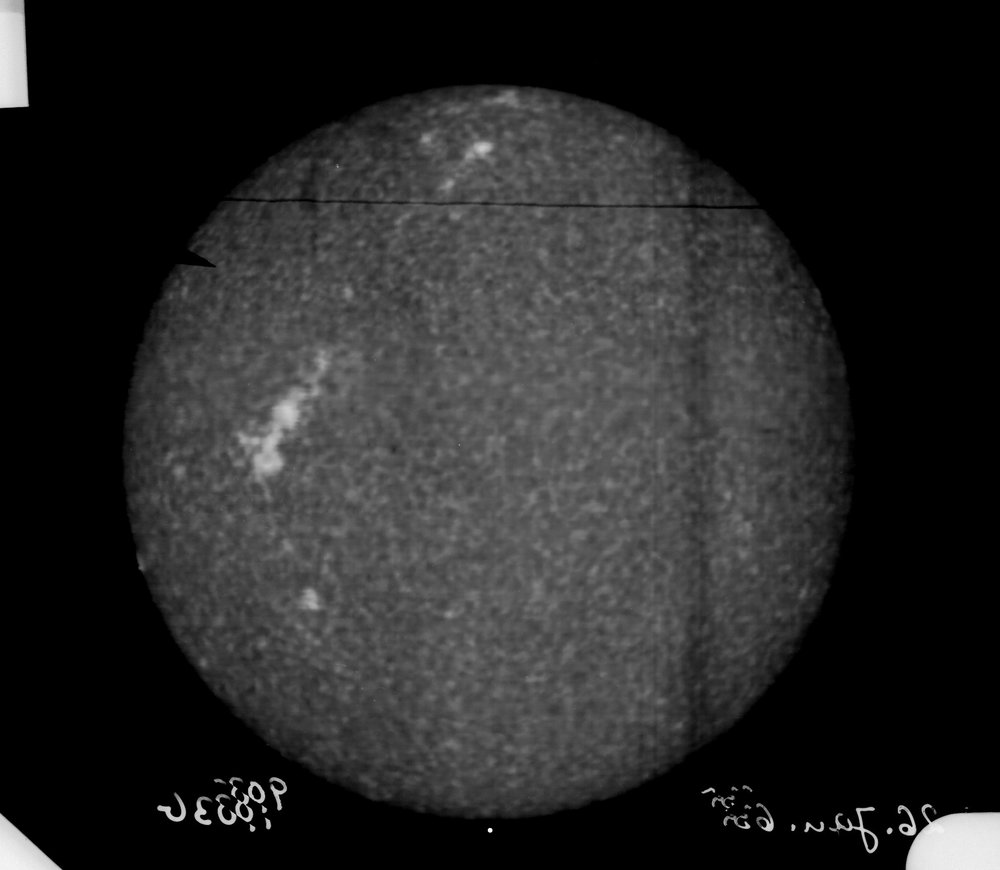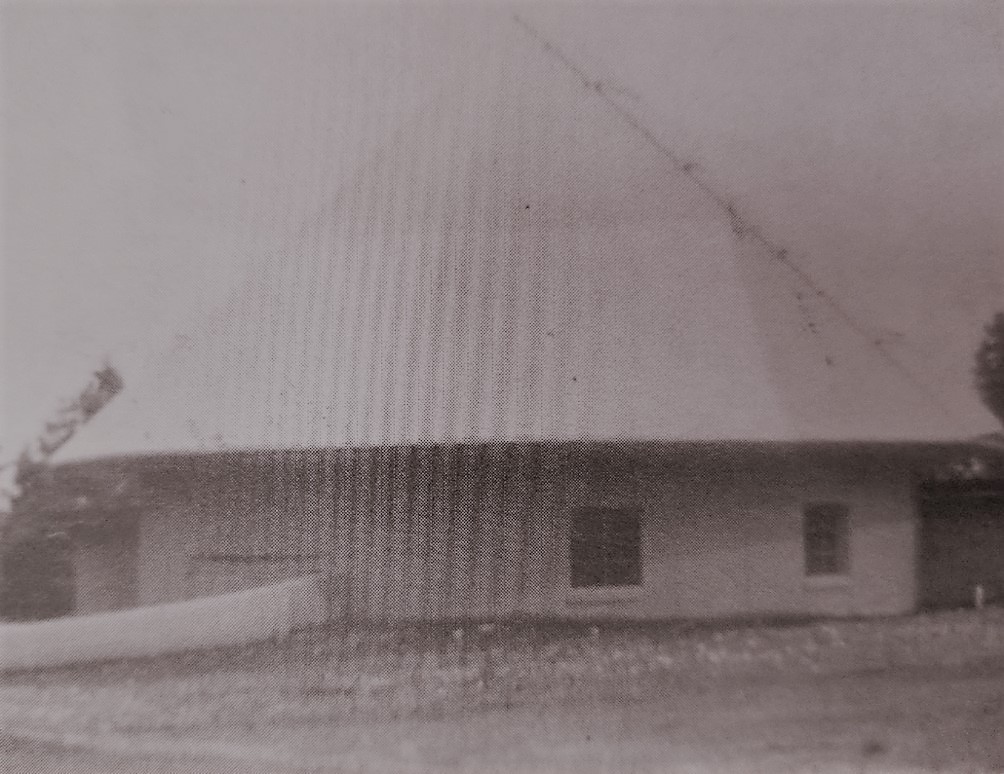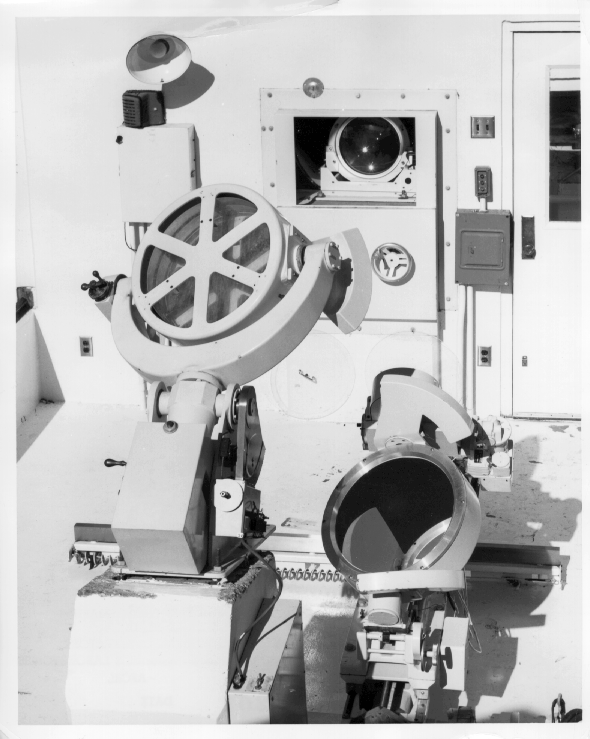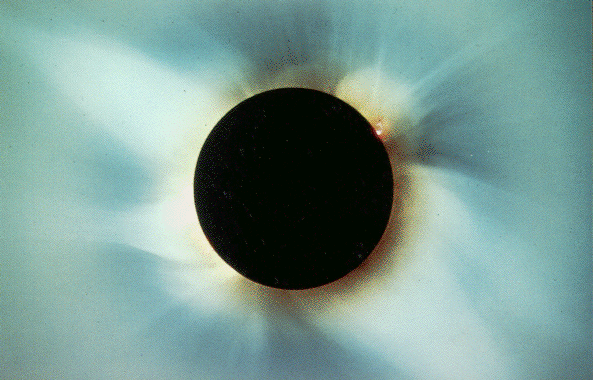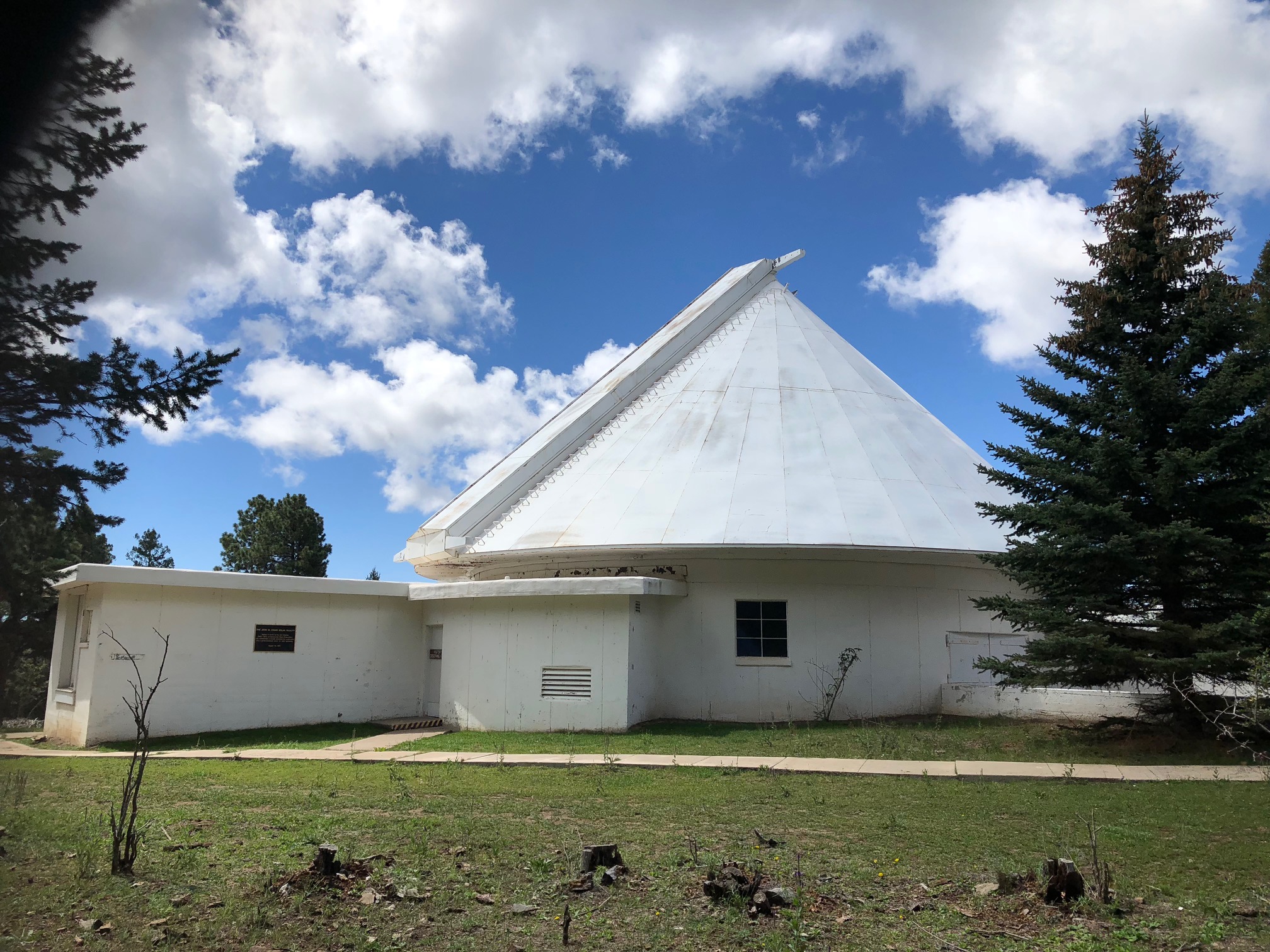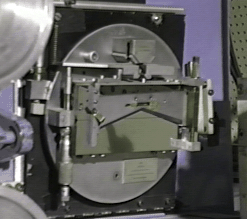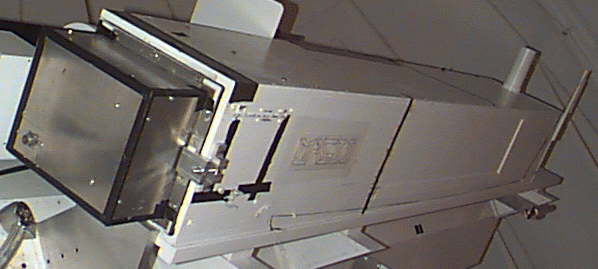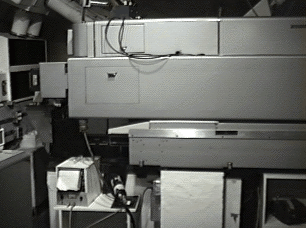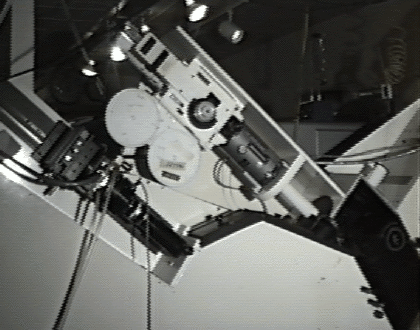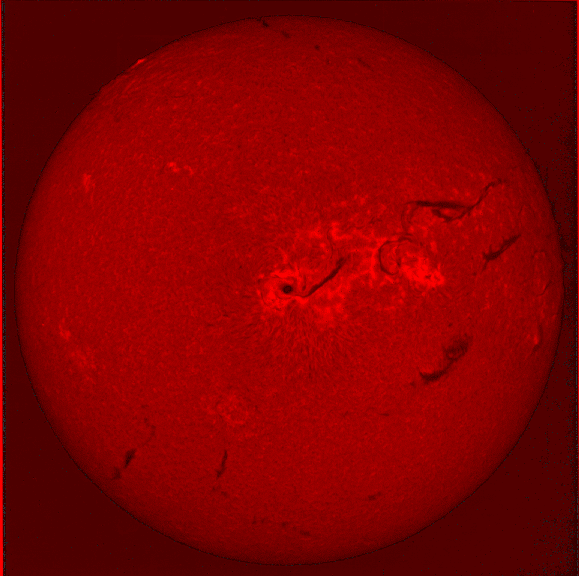John W. Evans Solar Facility
The Evans facility first came into operation in 1952 and was used for studies of the sun's surface (photosphere), lower atmosphere (chromosphere), and the overlying corona (outer atmosphere). Attached to a 26-foot (8-meter) long spar were a number of separate telescopes. The largest was a 16-inch (40-centimeter) coronagraph housed in a large tube on the top of the spar. At the time, this instrument was the largest of its kind in the United States and the nation's most powerful tool for studies of the Sun's corona.
Light from the coronagraph was directed by a series of mirrors and lenses into an observing room located below and to the left of the spar. In this observing room, the actual work area of the dome where the telescopes were controlled, were spectrographs and other instruments for photographing and analyzing the sun.
On the right side of the spar was another 16-inch (40-centimeter) telescope, to which a magnetograph was attached. This instrument revealed intense magnetic fields in the sunspot regions, which are thousands of times stronger than the magnetic field of the Earth. Rapid changes in these solar magnetic fields are the likely source of spectacular flares, which send tremendous amounts of energy in the form of electromagnetic waves and atomic particles out into space.
The dome of this building rotated automatically to follow the sun. When in rotation, a bell would ring to warn visitors the dome was turning.
At the rear of the building was an unusual telescope, called a coelostat (see-lo-stat), which was situated on a platform. It consisted of two flat mirrors which reflected sunlight into the Big Dome for analysis.
